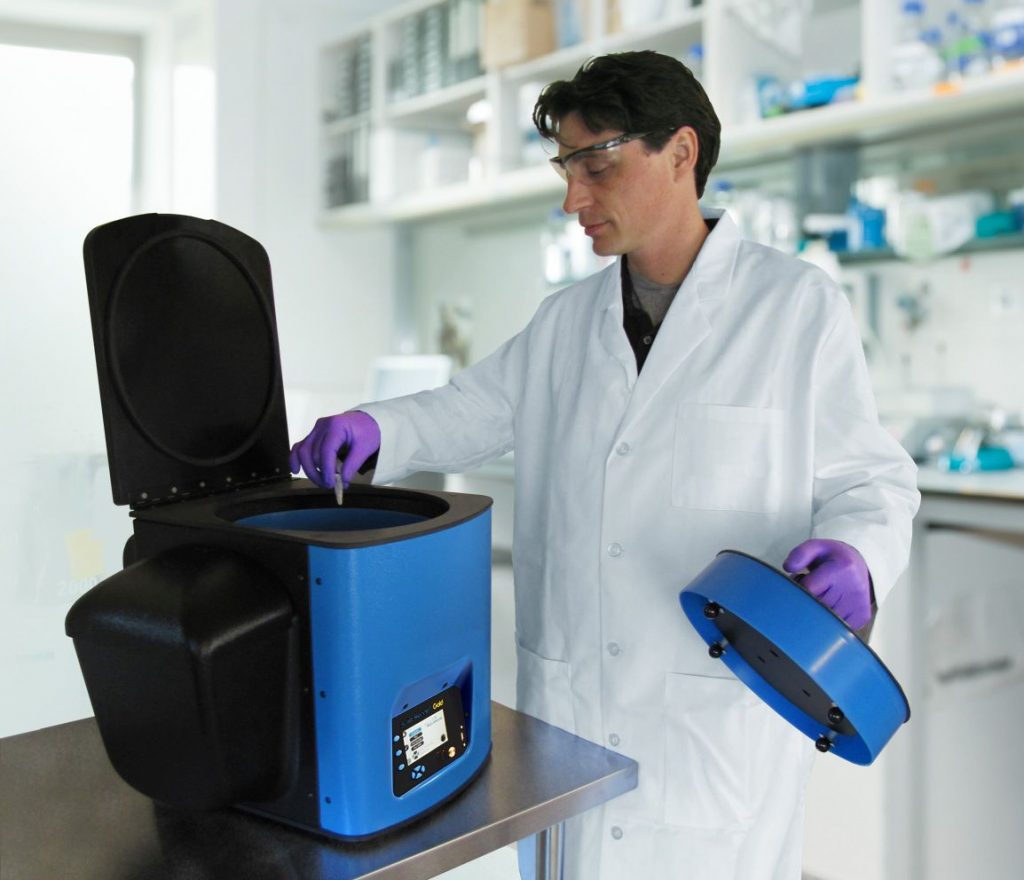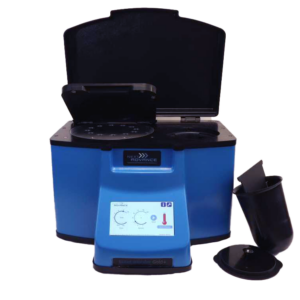Ideal for Tissue Samples
Save Time, Effort and Get Superior Results with
The Bullet Blender® Homogenizer
- Consistent Results
- Samples Stay Cool
- No Cross Contamination
- Easy & Convenient
- Risk Free
Do you spend lots of time and effort homogenizing tissue samples? The Bullet Blender® is a multi-sample homogenizer that delivers high quality and superior yields. No other homogenizer comes close to delivering the Bullet Blender’s winning combination of top-quality performance and budget-friendly affordability.
Consistent and High Yield Results
Run up to 24 samples at the same time under microprocessor-controlled conditions, ensuring experimental reproducibility and high yield. Process samples from 10mg or less up to 3.5g.
No Cross Contamination
No part of the Bullet Blender® ever touches the tissue – the sample tubes are kept closed during homogenization. There are no probes to clean between samples.
Samples Stay Cool
Homogenizing causes only a few degrees of heating. Our Gold models keep samples at 4°C.
Easy and Convenient to Use
Just place beads and buffer along with your tissue sample in standard tubes, load tubes directly in the Bullet Blender, select time and speed, and press start.
Risk Free Purchase
The Bullet Blender® comes with a 30 day money back guarantee and a 2 year warranty, with a 3 year warranty on the motor. The simple, reliable design enables the Bullet Blenders to sell for a fraction of the price of ultrasonic or other agitation based instruments, yet provides an easier, quicker technique.
Example Bullet Blender settings for Tissue Homogenization
Sample size |
See the Protocol |
| microcentrifuge tube model (up to 300 mg) | Small adipose tissue samples |
| 5mL tube model (100mg - 1g) | Medium adipose tissue samples |
| 50mL tube model (100mg - 3.5g) | Large adipose tissue samples |




What can you homogenize in a Bullet Blender?
Adipose, Adrenal Gland, Aorta, Bladder, Blood Vessel, Bone, Brain, Cartilage, Cecum, Colon, Cranium, Diaphragm, Duodenum, Ear Punch, Eye, Feces, Fish Organs, Gallbladder, Genital Warts, Heart, Hypothalamus, Intestinal Mucosa, Intestine, Jejunum, Kidney, Larynx, Liver, Lung, Lymph Node, Marrow, Meconium, Mouse Femur and Tibia, Muscle, Nasal/Olfactory Mucosa, Oropharynx, Pancreas, Pharynx, Pituitary Gland, Placenta, Polyp, Salivary Gland, Skin, Spleen, Stomach, Tail Snips, Teeth, Testes, Thalamus, Thymus, Thyroid, Tongue, Trachea, Tumor, Umbilical Cord, Uterus
Don’t see your tissue? Want more guidance? Contact our application support scientists:







